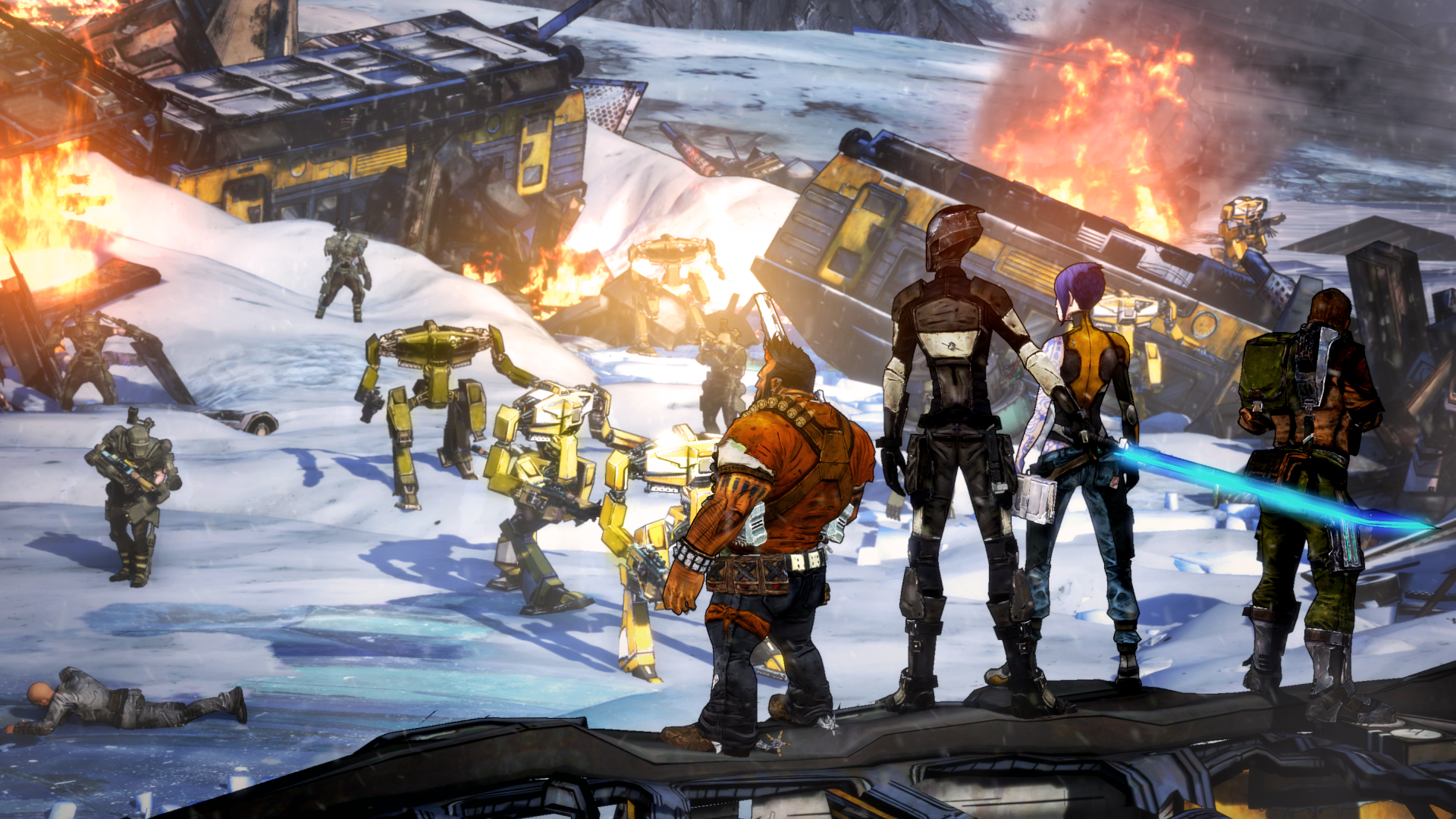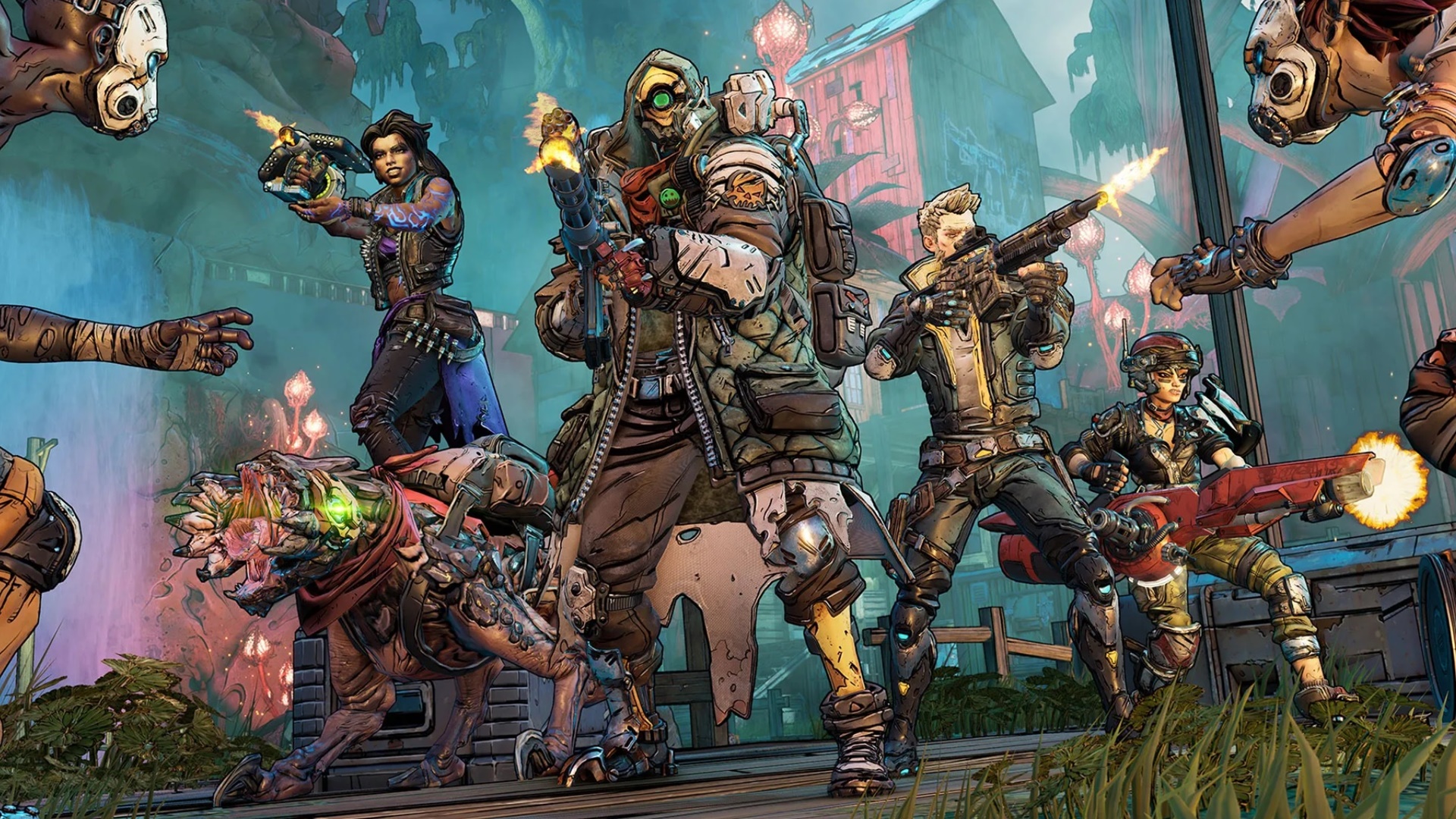In its heyday, the PlayStation 3 and Xbox 360 era produced many still-ongoing franchises, but few have endured quite as interestingly as Borderlands. Gearbox Software’s shooter-RPG series has been so definitive and so infamous for so long in ways that will never truly go away. At the same time, it’s always been itself: for better or worse, Borderlands has no interest in changing what it is, or at least not for very long.
Gearbox and 2K released the first Borderlands on October 20, 2009 for the two consoles (and a week later on PC), and it almost wasn’t what it is now. While it always seemed destined to be “Halo meets Diablo” and center on four Vault Hunters looking for alien Vaults on the planet Pandora, its initial showing had a more brown and tan palette similar to Fallout or Mad Max. Its now classic cel-shaded art style was chosen when the developers decided it needed a more distinct visual hook, much to the dismay of the game’s original art director. But the new look did its job: in addition to making it distinct, it inspired the team to get more outlandish, such as nixing “boring” class abilities in favor of more magical, RPG-like powers.

The end result is a shooter that felt like a breath of fresh air compared to others at the time. Back then, Borderlands came onto the scene with a lot of confidence and personality. From its still-iconic opening set to Cage the Elephant’s “Ain’t No Rest for the Wicked” to the flashy, witty title cards for key characters and bosses, it was clear the aim here was to have some good shoot-and-lootin’ fun. Audiences largely grooved with that; it sold two million copies within two months, and that number climbed over the years. It didn’t hurt that four well-sized DLC packs gave it a long tail and reason to come back, possibly with some newcomers joining in on the fun.
In 2012, Borderlands 2 came out with more: more story, new classes with more ridiculous abilities, more location variety, and most importantly, more guns. There’s a lot of game in that game, even before its own DLC expansions added onto the pile. Acclaim for the new release was even higher than the first, and it wouldn’t be wrong to say it’s the most important (and possibly still the best) entry of the series. But that definitive status cuts both ways, particularly when it comes to the writing. Borderlands 2 is where the cast becomes especially… chatty, to put it charitably, and that doesn’t always go over well. The humor can be a lot and not for everyone. In going through some of the games in recent years, I found myself not really paying attention to the story. If there’s any series of games that’ll help you whittle down your podcast or YouTube essay queue, it’s this one.
Do the Borderlands games deserve to be punched at so often? Proooooobably not; their sense of humor isn’t offensive so much as it just excessive, to the point tuning out the dialogue becomes second nature. Really, the only time people have fully grooved with the writing was the first Tales from the Borderlands, in part because TellTale decided to dial it back several notches. The shadow of that beloved, episodic narrative adventure looms over the larger franchise, and Gearbox eventually folded characters from the original Tales into Borderlands 3. But an expansive megafranchise this is not; Gearbox has been careful to keep Borderlands big, but not so big it could cause the studio’s downfall. The bad movie from this past summer may as well have not happened, and it’s easy to imagine it won’t affect the series long-term.
Unlike other franchises from the PS3/360 era, Borderlands hasn’t had some kind of critically and commercially catastrophic low point. Everyone may have a specific entry they don’t like, but that hasn’t led to an installment that exists mainly to apologize for the previous game, as is the case with Mass Effect, Assassin’s Creed, or Halo. Gearbox was also ahead of the game in terms of preservation: the studio’s made a continuous effort to not just expand the franchise to other systems, but also make sure older entries and their DLC come to the current console generation to exist forever. Whether intentionally or by complete accident, this has grown into a future-proof, bulletproof franchise.

The Vault Hunters and locations may change, but Borderlands has otherwise stuck to the same playbook during its 15-year run. It’s kind of remarkable that a major, non-sports triple-A franchise from a western studio not concern itself with reinventing the wheel with each new installment. As the start of the current looter shooter era, this is even more notable; it hasn’t gotten lost in itself like Destiny sometimes does, and attempted competitors to both have been hobbled by an inability to fully understand what makes either so important. Gearbox isn’t interested in making these games chase current trends like a seasonal post-launch model or battle pass, even with more recent entries like the 2022 spinoff Tiny Tina’s Wonderlands. Instead, players are incentivized to keep chasing loot and stats that are all right there in the game proper, just waiting to be found.
If there’s a word that best fits Borderlands, it’s “reliable.” Across the three mainline games and two shooter spinoffs, it can just be a blast to play with friends and watch bandits and monsters explode or be lit on fire (or both) and bust out a variety of wacky abilities. It isn’t for everyone, and it’s more than aware of that; but it’s comfortable in its own skin and is perfectly fine being dunked on while its devout audience keeps coming back for more. And as someone who pops in and out of that demographic, I say: bring on Borderlands 4, which is currently slated for 2025.
Want more io9 news? Check out when to expect the latest Marvel, Star Wars, and Star Trek releases, what’s next for the DC Universe on film and TV, and everything you need to know about the future of Doctor Who.


















+ There are no comments
Add yours